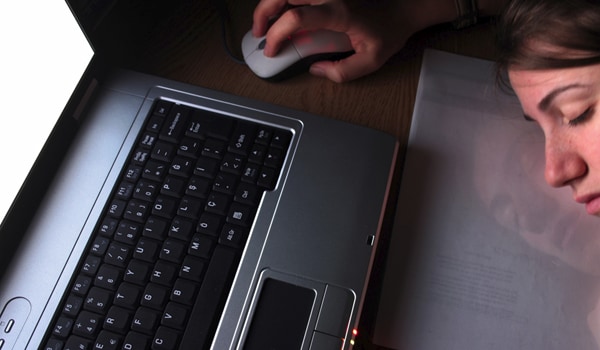

Can technology cause health problems? The answer is a resounding yes. While technology undeniably enhances many aspects of our lives, it can also introduce a range of health concerns, from physical strains to psychological impacts. This comprehensive guide will explore the potential negative effects of technology on our physical, mental, and social well-being, highlighting the key risks and offering practical solutions to mitigate those problems.
The Physical Toll of Technology
Ergonomic Issues
Spending extended hours hunched over computer screens or engaging in intense mobile gaming sessions can lead to serious musculoskeletal problems. Repetitive strain injuries, neck pain, back pain, carpal tunnel syndrome, and eye strain are all common complaints among technology users. The prolonged static postures often associated with technology use can disrupt proper spinal alignment and increase the risk of chronic pain conditions. For example, studies have shown a direct correlation between extended screen time and increased rates of musculoskeletal disorders among young adults. This is further exacerbated by poor ergonomic setups and the lack of sufficient breaks during prolonged usage. The long-term implications of this can result in reduced productivity and decreased quality of life.
Sedentary Lifestyle
The sedentary nature of much modern technology use contributes significantly to an overall sedentary lifestyle. Minimal physical activity coupled with prolonged periods of sitting can lead to weight gain, cardiovascular problems, and an increased risk of various chronic diseases. Consider the average person who spends hours each day on their phone, tablet, and computer while doing minimal physical activity outside of this. This could likely lead to an increasingly sedentary lifestyle that may lead to health problems down the road. Promoting regular physical activity alongside technology use is crucial for maintaining good overall health.
Sleep Disruptions
The blue light emitted from screens, especially during late hours, can interfere with the natural sleep-wake cycle. This disruption can lead to difficulty falling asleep, shorter sleep duration, and reduced sleep quality, all of which can negatively affect mood, concentration, and physical health. Studies indicate that prolonged exposure to light-emitting devices before bed can significantly impact melatonin production, the hormone responsible for regulating sleep patterns.
The Mental Health Impact of Technology
Technostress
The constant connectivity and pressure to stay updated and responsive can lead to a state of mental stress and anxiety. This phenomenon, known as technostress, encompasses a wide range of symptoms, from feeling overwhelmed to experiencing burnout and reduced productivity. Many people feel immense pressure to engage with technology constantly, leading to increased stress levels. Managing technology usage through self-discipline and time management is essential for effectively mitigating this problem.
Social Isolation and Connection Issues
Virtual Interactions
While technology facilitates communication across vast distances, excessive reliance on virtual interactions can lead to social isolation. This is often seen in individuals who prioritize online relationships over face-to-face connections, potentially leading to feelings of loneliness and diminished social skills. This can also have a negative impact on developing strong and meaningful relationships with others in real life. The quality of the virtual interactions may not measure up to the quality of the interpersonal interaction. A careful balance between both is key to fostering both virtual and real connections with others.
Cyberbullying
The anonymity offered by online platforms can unfortunately facilitate cyberbullying and harassment. This can have serious consequences on the mental health and well-being of victims, triggering anxiety, depression, and even suicidal thoughts. Educating individuals about the dangers of cyberbullying and fostering a sense of online community that discourages such behavior is necessary to combat this phenomenon.
Additional Risks and Concerns
Addiction and Compulsive Behaviors
Excessive technology use can sometimes lead to problematic behaviors, such as social media addiction and excessive gaming. The instant gratification and dopamine-releasing mechanisms in many apps can contribute to compulsive use patterns and have negative impacts on mood and overall well-being. Addiction is an issue that needs to be taken seriously, and there are resources that may assist with this.
Information Overload
The sheer amount of information available online can overwhelm individuals, leading to difficulty concentrating and processing information effectively. This can lead to information overload, decreased cognitive abilities, and even anxiety.
Strategies for Healthy Technology Use
Setting Boundaries
Establishing clear boundaries around technology usage is essential for a healthy lifestyle. This includes setting specific times for technology use, designating specific spaces for certain activities, and learning to disconnect regularly. The key is to find the right balance to maintain both productivity and well-being.
Prioritizing Breaks and Physical Activity
Taking regular breaks and incorporating physical activity into your daily routine can counteract the negative physical effects of a sedentary lifestyle. This includes scheduling regular breaks to stretch, walk around, or engage in other forms of physical activity. This can greatly help maintain good physical and mental health.
Cultivating Real-Life Connections
Making time for face-to-face interactions and nurturing relationships outside the virtual world is crucial for maintaining a balanced and healthy lifestyle. Prioritizing real-life interactions and strengthening social connections is essential for a well-rounded lifestyle.
In conclusion, technology’s impact on health is multifaceted and complex. While technological advancements offer numerous benefits, it’s crucial to acknowledge the potential for health issues. By understanding the risks and adopting preventative measures, individuals can mitigate these problems and reap the advantages of technology in a healthier way. To learn more about specific risks and take proactive steps for better well-being, explore our resources at [website link].